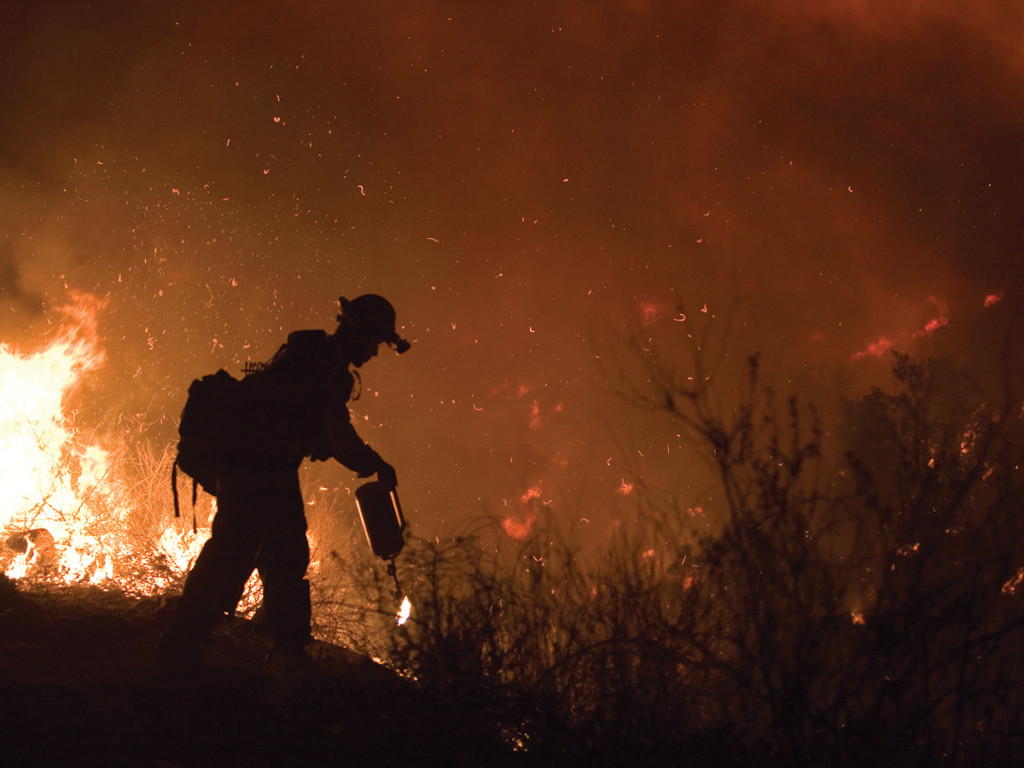
Recently, Lake County in Northern California experienced one of the worst wildfires in the state’s history. It all started with a spark. Local fire crews responded to the call to battle. Both the fire and the number of firefighters grew exponentially, and the battle dragged on. When the fire was extinguished, it had burned through 76,067 acres of forestry, where hundreds of residents and visitors resided. What is left are skeletons of houses, businesses and vehicles. One has to ask what factors contributed to the wildfire, and what Californians should focus on to prevent wildfires in the future. Wildfires happen all the time, but what made this valley fire so much more volatile?
The landscape was full of pine trees, which were stressed from the drought. Many of the trees were also inflicted with attacks by pine beetles, which left many pines dead or dying. The accumulation of dead trees and leaves provided a lot of fuel for the fire, and the risk of a wildfire increased dramatically. Also, there were 60 mph winds on that day, which sent embers across the valley. When the firefighters put out fires in one area, the embers ignited more fires in other areas. Considering how the two-lane roads, which led people in and out of towns, were congested, emergency services probably had trouble navigating to the next location. It was these conditions that allowed the wildfire to blaze at the level that it did.
By knowing the catalysts for the fire, one could determine how to better respond to or minimize future fire outbreaks. Regarding the buildup of dead pine trees, they can be either removed from the landscape architect info homes. However, some may say that the removal of trees won’t solve the problem of pine beetles. The job of pine beetles is to attack weakened trees, which thins out the forest and removes flammable pine needles and branches. In some way, the pine beetles are helping nature thin the forest and their removal may not be an answer.
As for traffic congestion, the only road in the area is California State Route 29, which is a two-lane road full of twists and turns, making it extremely dangerous to drive quickly. Not to mention, most of the roads were engulfed in flames. It was reported that roads were littered with charred vehicles. These roads could not accommodate most of the vehicles used by 3,000 evacuees. Therefore, the roads should be upgraded to accommodate more traffic, which would allow for quicker evacuations and emergency response times.
Also, nearby Californian settlements should collaboratively plan evacuation plans and drills, in order to prepare for possible future wildfires. In an area that is at high risk for fire, the basic evacuate-the-building-and-line-up-in-the-grass is not enough. There should be drills that are practiced by the people living in the area. There should also be established rules to prevent chaos and havoc among the evacuees. People should know driving etiquette during a fire in order to prevent accidents that could cause traffic. People should know which locations to go to for protection. Everyone should be accounted for. Vehicles should be available to pick up school children and elderly. Rendezvous points with vehicles should be made for those, who do not have access to a vehicle.
While these are actions that Californians can take, many of nature’s elements are out of the control of man. In this case, humans cannot control the intensity of the sun and wind. However, Californians can take action to curb the effects of the drought. After all, the main cause of wildfires is dryness, which can stem from a drought. It is the drought that partially caused the pine trees to be weakened, which brought extra fuel for the fire. While fighting the reasons that contributed to the fire is important, Californians should fight the drought in any way possible.
Undoubtedly, minimizing risks of fire would take capital, planning and action, but it is a required price for reducing risk in wildfire vulnerable areas.








